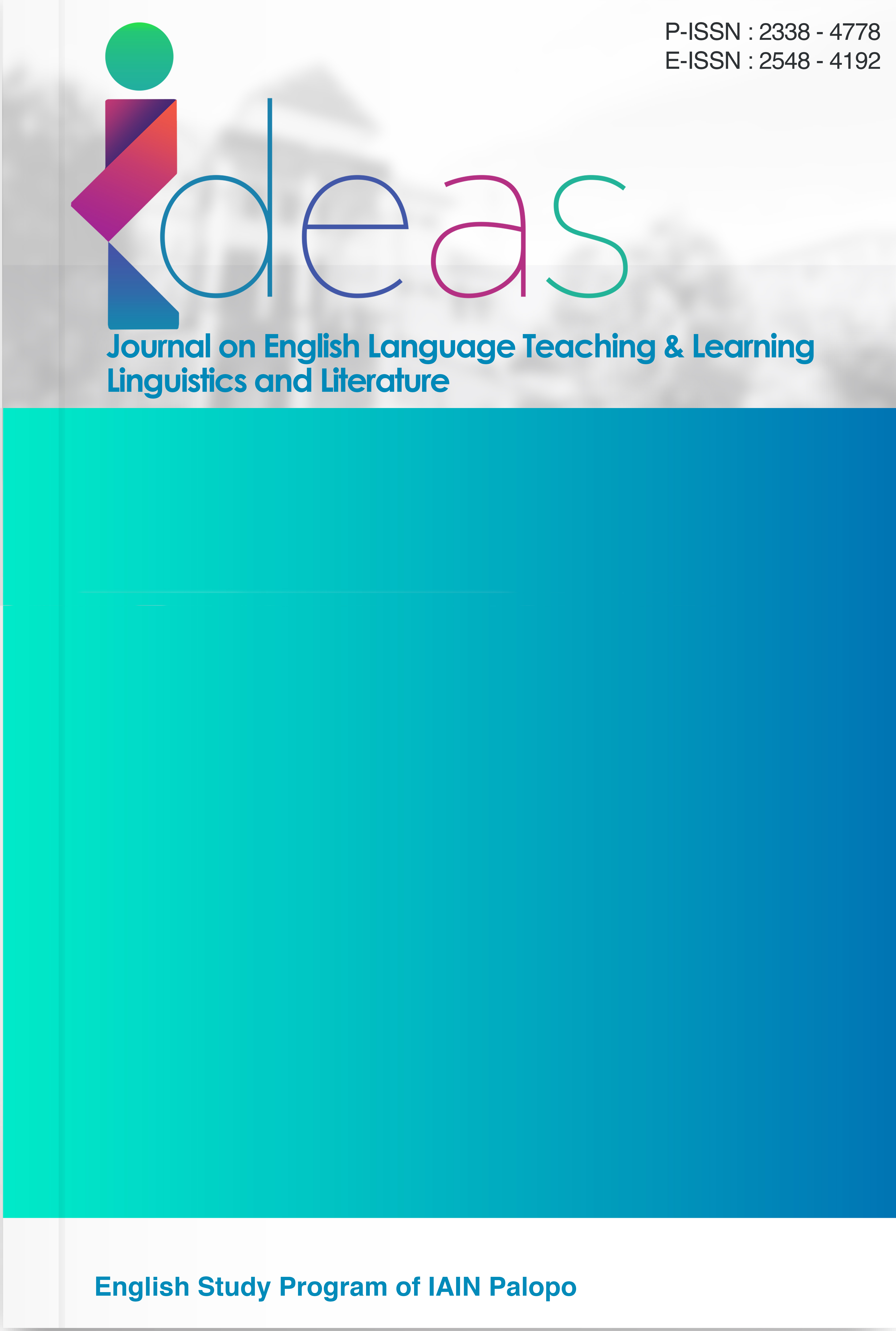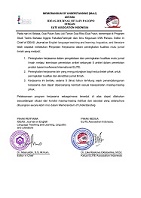Slang as a Communication Strategy Employed by Jay and Jake of ENHYPEN in the Daebak Show Podcast
DOI:
https://doi.org/10.24256/ideas.v13i2.6963Keywords:
English slang, K-Pop, Informal communication, Sociolinguistics, PodcastAbstract
This study examines the use of English slang by Jay and Jake from Enhypen during their guest appearance on Eric Nam’s Daebak Show Podcast. Employing a descriptive qualitative approach, it investigates the morphological forms, semantic shifts, and pragmatic-social functions of slang terms used in the podcast. The primary data comes from the episode titled “ENHYPEN’s JAY & JAKE had ‘FATE’ to join Eric Nam | DAEBAK SHOW S3 EP12,” released on August 8th, with a duration of 52 minutes. The analysis focuses on spontaneous, informal English expressions from the idols, revealing how slang terms such as "gotta," "kinda," and "vibe" signal group membership and a sense of belonging among youth and fans. This research demonstrates that slang functions not only as a tool for informal communication but also as a form of emotional expression and a means of establishing social identity and relatability within a global audience. The study emphasizes how slang reflects contemporary youth culture and the impact of media platforms in shaping language use. A total of 12 distinct slang terms were identified, several of which served multiple linguistic functions across three analytical categories, resulting in 14 instances of categorized usage. While the sample is limited to two speakers in a single episode, the focused analysis offers valuable insights into language use among K-Pop idols. This research contributes not only to understanding the role of informal linguistic practices in cross-cultural communication but also offers practical insights for English language teaching (ELT), such as integrating contextualized slang into classroom instruction, as well as for media discourse analysis and studies of global youth identity in digital environments.
References
Adams, M. (2012). Slang: The people's poetry: Oxford University Press.
Akhtursunova, A., & Aubakirova, G. (2024). Features of formal and informal communication in the English language. Bulletin of LN Gumilyov Eurasian National University. Philology Series, 146(1), 33-40.
Arjulayana & Nargis. (2023). The Effect of Storytelling on 2nd Semester Students of University Muhammadiyah Tangerang. Globish: An English-Indonesian journal for English, Education and Culture, 12(2), 119-129.
Cahyani, B. D. I., & Jafar, S. (2020). Bentuk dan Fungsi Bahasa Slang pada Keterangan Foto Akun Lambe Turah di Media Sosial Instagram:The Form and Function of the Slang in the Caption Photo of the Lambe Turah Account on Instagram Social Media. Jurnal Bastrindo, 1(2), 116-123.
Chen, S. (2023). The influence of K-pop culture on the consuming behavior of Chinese urban youth and adolescents. Academic Journal of Humanities & Social Sciences, 6(22), 15-20.
Creswell, J. W., & Poth, C. N. (2016). Qualitative inquiry and research design: Choosing among five approaches:Sage publications.
Cruz, A. G. B., Seo, Y., & Binay, I. (2021). Cultural globalization from the periphery: Translation practices of English-speaking K-pop fans. Journal of Consumer Culture, 21(3), 638-659.
Hancock, B., Ockleford, E., & Windridge, K. (2001). An introduction to qualitative research: Trent focus group London.
Irshad, H. (2022). An Investigation into the Requirement of Communicative Competence in the Usage of Slang.
Iksan, M., Husnaini, H., & Masruddin, M. (2022). Implementation of a weekly English program with a fun learning method for Pesantren students. Ethical Lingua: Journal of Language Teaching and Literature, 9(2), 872-879.
Lumbantobing, S. R. A. H., & Pardede, H. (2020). The effect of the herringbone technique on the students' ability in reading comprehension of recount text. Journal of English Educational Study (JEES), 3(2), 91-100.
Megarani, S., & Dini, J. (2021). An analysis on K-Pop fandom slang word formation in the drama 'Her Private Life.' International Review of Humanities Studies, 6(3), 7.
Melissa, P., Siregar, M. B. N., Shakira, F. M., Haz, L., & Rangkuti, R. (2024). Sociolinguistics study: Variation of slang words between Gen Z and Gen Alpha. Philosophica: Jurnal Bahasa, Sastra, dan Budaya, 7(2), 114-125.
Meyer, C. F. (2009). Introducing English Linguistics: Cambridge University Press.
Mysyk, V. (2024). Exploring the psyche: Social comparison and K-Pop idolization. Collection of scientific papers, 373-377.
Masruddin, Hartina, S., Arifin, M. A., & Langaji, A. (2024). Flipped learning: facilitating student engagement through repeated instruction and direct feedback. Cogent Education, 11(1), 2412500.
Napitu, F. E., & Suhardianto, S. (2020). An analysis of slang word abbreviations in American captions on Instagram: a sociolinguistic approach. Scientia Journal: Jurnal Ilmiah Mahasiswa, 2(1).
Nargis & Imtihan, H. (2018). Across Culture Communication Style Choices in Western and British Culture in The Leap Year Movie. Globish: An English-Indonesian journal for English, Education and Culture, 7(2), 24-35.
Pongsapan, N. P. (2022). An analysis of slang language used in English students’ interaction. ONOMA: Pendidikan, Bahasa dan Sastra, 8(2), 917-924.
Rime, J., Pike, C., & Collins, T. (2022). What is a podcast? Considering innovations in podcasting through the six-tensions framework. Convergence, 28(5), 1260-1282.
Safithri, N. A., Sahrani, R., & Basaria, D. (2020). Quality of Life of Adolescents (Korean pop fans). Paper presented at the Tarumanagara International Conference on the Applications of Social Sciences and Humanities (TICASH 2019).
Sutikno, E. U., Gunawan, Y. I., & Firdaus, M. I. (2023). An analysis of using the movie Lost in Translation in a sociolinguistics class on the seventh semester students' understanding of culture and language. Globish: An English-Indonesian Journal for English, Education, and Culture, 12(1), 40-48.
Utami, M., Syamsudduha, S., & Maman, M. (2022). Language Variations in Siniar (Podcast) Youtube: Sociolinguistic Studies. Journal of Asian Multicultural Research for Social Sciences Study, 3(3), 23-29.
Wahyu Nuraeni, F., & Pahamzah, J. (2021). An analysis of slang language used in teenager interaction. Jurnal Penelitian Bahasa, Sastra Dan Pengajarannya, 20(2), 313-322.
Widiarini, W. (2019). A closer look at communication strategy: A framework for the term "communication strategy." Journal of Development Research, 3(1), 14-19.
Yule, G. (2010). The study of language, 4th edition. Cambridge: Cambri Carlisle, JF (2010). Effects of Instruction in Morphological Awareness on Literacy Achievement: An Integrative Review. Reading Research Quarterly, 45(4), 464-487.
Downloads
Published
Issue
Section
Citation Check
License
Copyright (c) 2025 Nurul Lailatul Qodriyati, Moh Iqbal Firdaus, Diah Retno Anggraini

This work is licensed under a Creative Commons Attribution-ShareAlike 4.0 International License.
Authors retain copyright and grant the journal right of first publication with the work simultaneously licensed under an Attribution-ShareAlike 4.0 International (CC BY-SA 4.0) that allows others to share the work with an acknowledgement of the work's authorship and initial publication in this journal.
Authors are able to enter into separate, additional contractual arrangements for the non-exclusive distribution of the journal's published version of the work (e.g., post it to an institutional repository or publish it in a book), with an acknowledgement of its initial publication in this journal.
Authors are permitted and encouraged to post their work online (e.g., in institutional repositories or on their website) prior to and during the submission process, as it can lead to productive exchanges, as well as earlier and greater citation of published work (See the Effect of Open Access)




